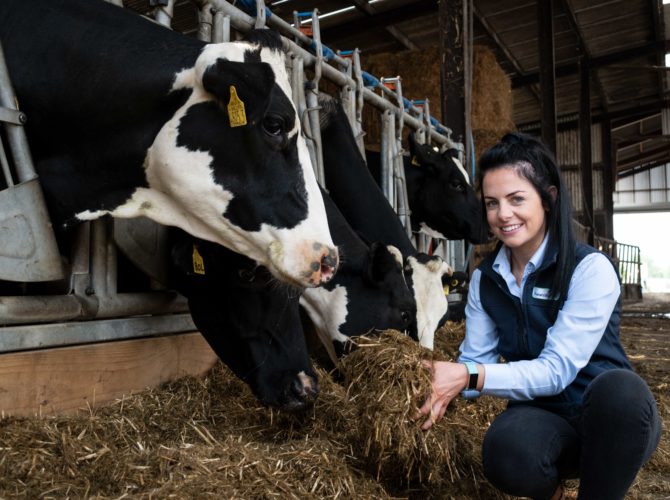Dry Cow Silage Is Key To A Successful Transition Period.
20th September 2022

Correct dry cow nutrition especially during the close-up period, is essential for optimum performance in the next lactation, both in terms of milk yield and fertility, and to reduce the incidence of metabolic disease during the fresh period.
The Role of Calcium
There are many aspects of dry cow nutrition that need to be considered, however calcium metabolism is one of the key components to ensure a successful transition into early lactation.
Calcium plays a vital role in muscle and immune function and is most commonly associated with milk fever incidence. However, for every case of clinical milk fever, i.e., a ‘downer cow’ there may be more than eight cases of sub-clinical milk fever.
The consequences of sub-clinical milk fever:
- Calving dystocia and increased risk of retained placenta
- Reduced rumen motility – increased risk of displaced abomasum and lower DMI post calving
- Increased outbreaks of mastitis in early lactation
What is DCAB?
The dietary balance of cations (Na+ + K+) to anions (Cl– + S—) is referred to as Dietary Cation Anion Balance (DCAB) and its level affects blood pH which in turn affects calcium availability.
Acidifying the blood pH increases calcium mobilisation from the bones and intestinal tract, therefore allowing the cow to react much more efficiently to the sudden increase in calcium demand at the onset of lactation, which will help to reduce the incidence of clinical and sub clinical milk fever.
A partial DCAB diet is the safest and most commonly implemented on farm.
How to implement a partial DCAB diet on farm.
- The majority of grass silages, particularly first cuts, in Northern Ireland contain elevated levels of potassium which increases the overall DCAB value.

Average Mineral Profile for Grass Silage in Northern Ireland from May – August 2022.
- Conducting a mineral analysis will be able to identify which forages are best suited to the close-up dry cow period. Ideally the dry cow forage will have a potassium level of less than 1.5% and a DCAB of less than 150.
- Specific dry cow forage can be made by selecting fields with a low K index, applying no slurry or K in fertiliser, and cutting 2 – 3 weeks after heading.
- The inclusion of chopped straw can help dilute potassium levels in the grass silage, wheat straw is preferrable as it will typically have a lower DCAB value compared to barley straw.
- Maize or whole crop silage are also ideal dry cow forages as they will naturally have a lower DCAB value and stimulate dry matter intake.
- In cases where a low DCAB forage is not available, feeding Fane Valley Dry Cow Primer Nuts will help to reduce the overall dietary DCAB.
- Ensure the close-up dry cow diet is implemented for a minimum of 4 weeks prior to calving.
For further information, contact your Fane Valley Feeds Sales Rep or Telephone 028 8224 3221

